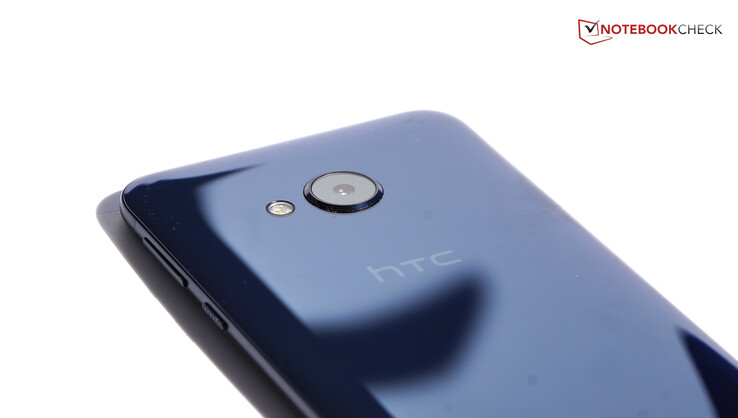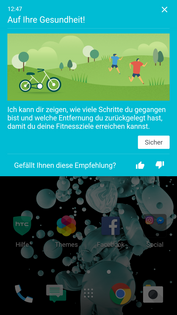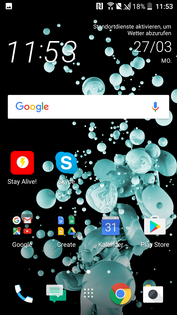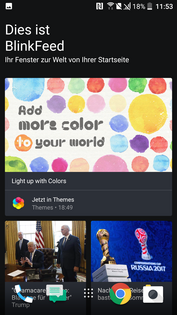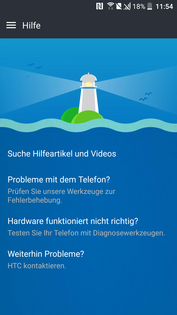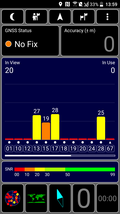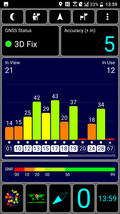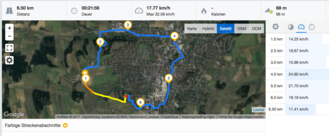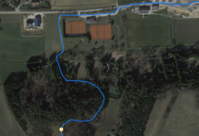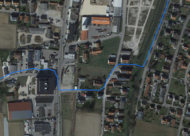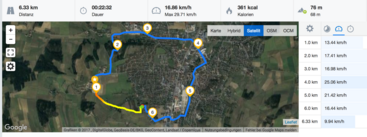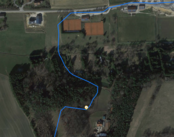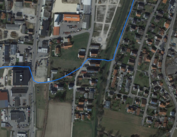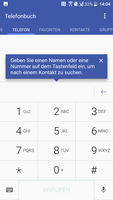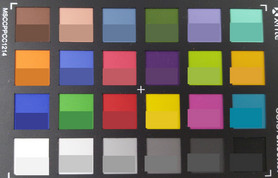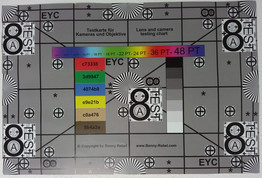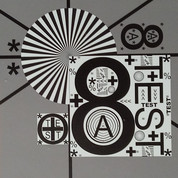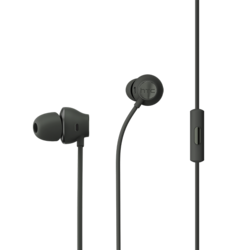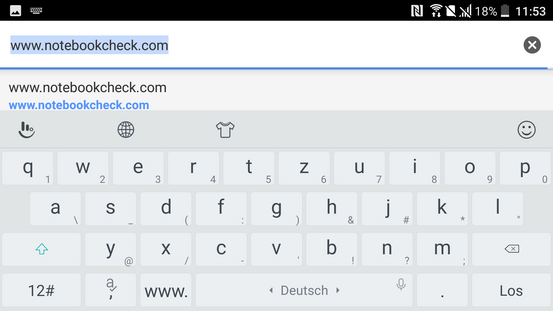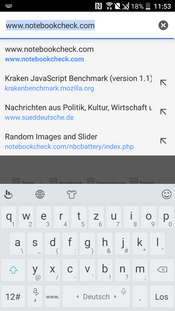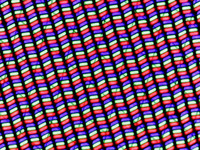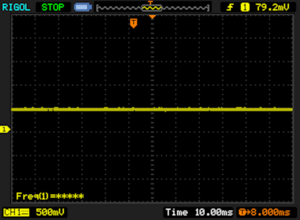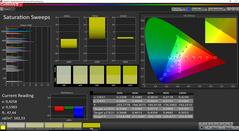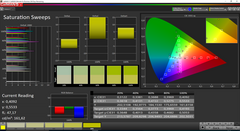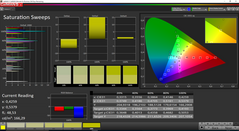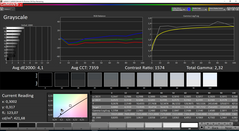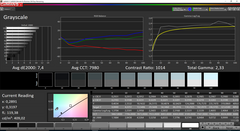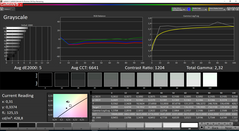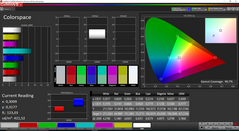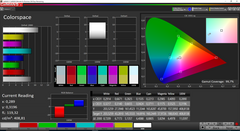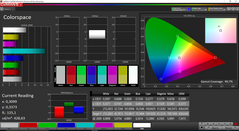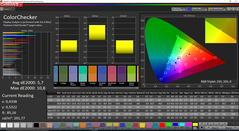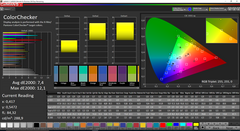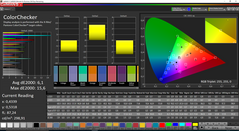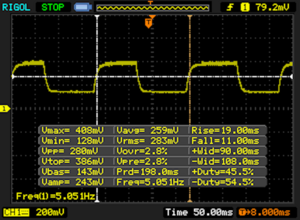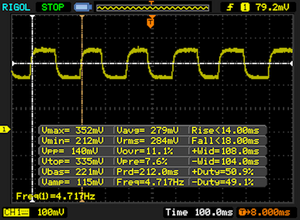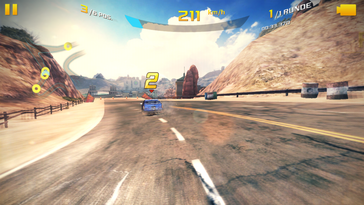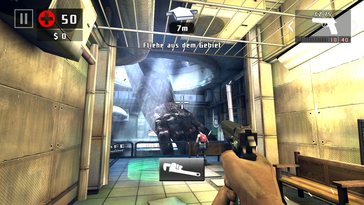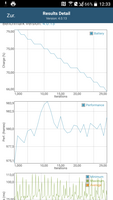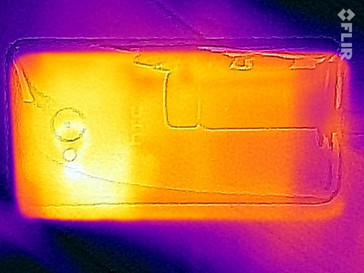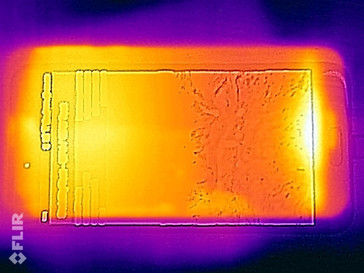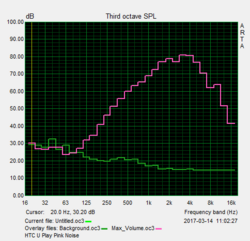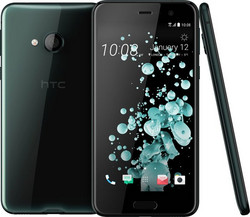HTC U Play Smartphone Review
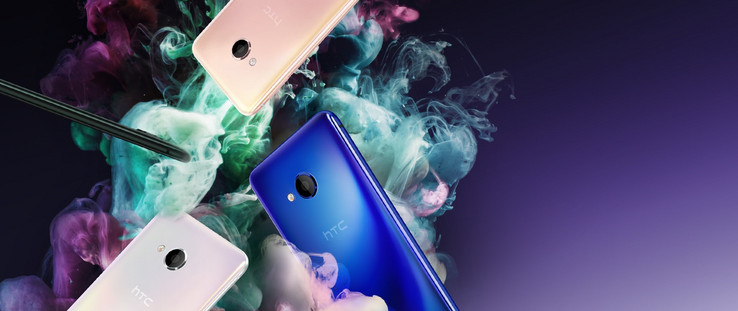
For the original German review, see here.
HTC aims to be more exclusive and sends its low-cost smartphones into retirement: High-quality models are to save the Taiwanese manufacturer who has had problems with sales in the recent past. HTC's U Play is a smartphone with exciting new features that are to shuffle up the mid-range. For example, it comes with a headset that adapts to its user's ears, a personal software assistant, and a completely new casing design comprised of glass and metal.
These are actually good preconditions for success, but some strong rivals exist in the mid-range, such as OnePlus' 3T that is traditionally a price crusher and comes with many premium-range features. Honor's 8 also offers a lot of power for little money, and Huawei's Nova Plus is also a worthy opponent. Sony's Xperia X is now also situated in the mid-range due to price reductions.
Case
HTC takes a different approach with its two newest smartphones, the HTC U Ultra and the now in review U Play: The Taiwanese manufacturer has created a design language called "Liquid Design" that works with multiple layers of glass, merged by high temperatures, for achieving stability and special effects on the rear. These effects are rather unspectacular on the black model where the environment is simply reflected. However, the glass curved at the edges creates a certain sense of depth. Other available colors are white, blue, and pink. The effects on these models are more striking as the light is reflected in different color hues on their backs. For example, a mother-of-pearl effect is produced on the white model. A problem of the glass surface is the high fingerprint susceptibility. The smartphone could also slide off just slightly slanted surfaces.
The casing is relatively stable. We cannot affirm the pressure sensitivity discovered in the screen of HTC's U Ultra in the U Play. The smartphone can only be warped marginally and does not produce any noises then. Unfortunately, an edge is very palpable in some places between the rear and metal bezel. Otherwise, all corners are rounded and the smartphone is very ergonomic to hold.
HTC's U Play is quite lightweight at 145 grams and fairly compact in terms of size. Only its height of 8 millimeters is a bit taller than those of the comparison devices. This is due to the protruding camera.
Connectivity
HTC's U Play is within the category standard with 3 GB of working memory and 32 GB of internal storage. However, more memory for the same price is now also available in, for example, OnePlus' 3T, and Honor's 8 even has 4 GB of working memory. The USB C port is the only existing physical port in HTC's U Play. It only supports USB 2.0 speed but external storage devices can be connected to it or it can be used for recharging other devices. A 3.5-mm audio jack is no longer installed. Users who want to connect their old headphones or earphones with a lug jack will need an adapter (from 5 to 20 Euros, ~$5 to ~$21, on the web). Our review sample is a single-SIM handset, but HTC's U Play also exists as a dual-SIM model.
Software
HTC's U Play is delivered with Android 6, which is a bit disappointing seeing that HTC's U Ultra already has Android 7. At least the security patches from January 1, 2017 are relatively up to date. HTC does not modify Android much and tries to put most functions into proprietary apps to make updating the operating system fast and easy. In addition to a help app with frequently asked questions concerning the handset, the system cleaning software Boost+ and photo app Zoe are preloaded.
The personal assistant called Sense Companion is to make HTC's new U-series special. It collects smartphone usage data and gives recommendations based on that. It gets to know its user better over time and adapts to their habits. A problem was that the app apparently was still in development at the market launch of HTC's U smartphones, but it is now available. Sense Companion needs a few days to get to know its user good enough for giving recommendations and then, for example, it recommends restaurants on trips or warns about traffic jams on the way to the next appointment.
Communication and GPS
Having nine LTE bands and speeds in LTE Cat.6 standard, i.e. up to 300 MBit (download) and 50 MBit (upload), HTC's U Play is well-equipped for its category. Only Sony's Xperia X offers slightly more wireless diversity. A network should still be found outside Europe. HTC's Play U did a good job in our practical test. In the well-developed German Vodafone network, we always had at least 3/4 of the LTE signal and could also use mobile Internet reliably indoors.
As to Wi-Fi, HTC's U Play uses all up-to-date standards; it supports 802.11 a/b/g/n/ac and can thus access the less frequented 5 GHz network, allowing it to utilize high-speed networks. The decent transmission speeds also underline this: We measured 249 MBit/s (receive) and 260 MBit/s (transmit) in our standardized test a meter away from the router. OnePlus' 3T is a bit faster, but it is possible to transmit data quickly with HTC's U Play. The reception quality is also decent: We had the full signal standing next to the router, and half the signal was displayed at a distance of 10 meters and through three walls; pages opened a bit slower then.
| Networking | |
| iperf3 transmit AX12 | |
| OnePlus 3T | |
| HTC U Play | |
| Huawei Nova Plus | |
| Asus Zenfone 3 ZE552KL | |
| iperf3 receive AX12 | |
| OnePlus 3T | |
| HTC U Play | |
| Huawei Nova Plus | |
| Asus Zenfone 3 ZE552KL | |
The GPS module in HTC's U Play usually could not locate us indoors, but the reception increased near a window. Our position was found quickly with an accuracy of 5 meters outdoors, which is a good accuracy rate.
To test its tracking capabilities under real-life conditions, we took HTC's Play on a bike trip along with Garmin's Edge 500 professional navigation system. The measured route differed by 170 meters over a length of 6.5 kilometers, which is acceptable. HTC's U Play sets tracking points less frequently, and thus the route is only an approximation. The professional navigation system updates the location more frequently and the route is thus traced more accurately. However, more inaccurate smartphones than HTC's U Play exist. It is absolutely suitable for occasional free-time navigating.
Telephone and Call Quality
The features of the phone app modified by HTC hardly differ from Google's stock app. Tabs for navigating are displayed in the screen's upper area. The keypad opens when the app is launched, but it is also possible to directly open the contact or call lists.
The call quality is good: The contact sounds relatively loud and clear via the internal earpiece. The microphone transmitted our voice a bit muffled and the contact did not hear us at all when we spoke too quietly. This is also true for the hands-free mode via the speaker: Too quiet voices are not transmitted and a minor echo is also present. The contact sounded considerably more muffled via the speaker than over the earpiece. We rate the call quality as good, although the HTC U Play user will enjoy calls more than the contact.
Cameras
HTC installs two 16-megapixel cameras into its U Play smartphone. Yes, that's right: The front camera also has a resolution of 16 megapixels, making very sharp selfies possible. It is also possible to switch to the UltraPixel mode (front camera only), which reduces the resolution. Larger pixel areas are then used for capturing more light, which is to be noticed positively especially in low-light situations. However, this mode should preferably not be used in bright light as our test photo illustrates: The UltraPixel mode pixelates the edges greatly when the photo is scaled up. Otherwise, we very much liked the front camera's photo quality and sharpness. The front camera does not have a flash and HTC compensates for this via a bright screen. This also means that the user is dependent on HTC's camera app when using this feature.
The rear camera does not offer an UltraPixel mode, but the sharpness and color reproduction are good. LG's G4 produces slightly more vivid and sharper photos in our comparison test. The dynamic in dark environments is also decent, but we liked the brightening of LG's G4 more. Videos can be recorded in Full HD quality at maximum; the frame rate is limited to 30 frames per second. We did not like the brightness adaptation quite as much: It is quite jerky when changing from bright to dark scenes (or vice versa), and it does not brighten dark areas enough in our opinion. It is possible to adjust this manually, but this does not lead to a smooth transition and a very visible color noise appears quickly. Thus, much more could be expected in terms of video quality, and the videos also display a light bluish tint.
An evident blurriness becomes visible in the primary camera's photo under defined light conditions in the lab. Text on colored backgrounds frays visibly. The sharpness decreases visibly toward the photo's edges in some areas. Compared with the CalMAN ColorChecker card, the color reproduction is a bit too inaccurate.
Accessories and Warranty
HTC is quite generous with accessories: A polishing cloth and a plastic cover for the smartphone belong to the unusual extras in the box. The power supply, USB C cable, and SIM tool are rather standard. The in-ear headset would also normally not be worth mentioning, but it has two special features: Firstly, HTC's U Play does not have an audio jack, and thus it is a headset with a USB C connector. Secondly, the headset called USonic can analyze the inner ear of its user and adapt the sound accordingly. This actually does have an audible impact and makes this accessory seem very high-quality.
It is possible to purchase a charger or car charger in HTC's web shop for approximately 35 Euros (~$37). The USonic headsets cost 40 Euros (~$42), and a high-quality headset by JBL with noise-cancelling technology is available for almost 200 Euros (~$211).
HTC includes a 24-month warranty on its smartphones. Please see our Guarantees, Return Policies and Warranties FAQ for country-specific information.
Input Devices and Handling
TouchPal is the name of the keyboard app, and it offers many features, such as adjustable size, skins, various languages, and a dividable letter field. The keys have a double assignment which can save time, but it also limits the clarity somewhat. It is also possible to enable Google's GBoard or install another keyboard app from Google's Play Store.
The screen is very touch sensitive even in its corners and offers a pleasant and glide-friendly surface. The fingerprint scanner below the screen responds very quickly to a previously saved fingerprint and can also be used as the home button. Back and menu touch buttons that also respond reliably are beside it.
The volume control and grooved standby buttons are situated on the right. Both buttons are easy to find and have clear pressure points.
Display
| |||||||||||||||||||||||||
Brightness Distribution: 90 %
Center on Battery: 424 cd/m²
Contrast: 1696:1 (Black: 0.25 cd/m²)
ΔE ColorChecker Calman: 5.7 | ∀{0.5-29.43 Ø4.78}
ΔE Greyscale Calman: 4.1 | ∀{0.09-98 Ø5}
99.7% sRGB (Calman 2D)
Gamma: 2.32
CCT: 7359 K
| HTC U Play Super LCD, 1920x1080, 5.2" | OnePlus 3T Optic-AMOLED, 1920x1080, 5.5" | Asus Zenfone 3 ZE552KL IPS, 1920x1080, 5.5" | Sony Xperia X LCD, 1920x1080, 5" | Huawei Nova Plus IPS, 1920x1080, 5.5" | Honor 8 IPS, 1920x1080, 5.2" | |
|---|---|---|---|---|---|---|
| Screen | -24% | -14% | -54% | -10% | -16% | |
| Brightness middle (cd/m²) | 424 | 421 -1% | 658 55% | 404 -5% | 485 14% | 451 6% |
| Brightness (cd/m²) | 432 | 430 0% | 633 47% | 392 -9% | 481 11% | 443 3% |
| Brightness Distribution (%) | 90 | 84 -7% | 93 3% | 91 1% | 90 0% | 93 3% |
| Black Level * (cd/m²) | 0.25 | 0.66 -164% | 0.68 -172% | 0.5 -100% | 0.4 -60% | |
| Contrast (:1) | 1696 | 997 -41% | 594 -65% | 970 -43% | 1128 -33% | |
| Colorchecker dE 2000 * | 5.7 | 7.1 -25% | 4.9 14% | 7.1 -25% | 4.2 26% | 5.4 5% |
| Colorchecker dE 2000 max. * | 10.8 | 15.3 -42% | 9.1 16% | 13.2 -22% | 7.9 27% | 9.9 8% |
| Greyscale dE 2000 * | 4.1 | 6.8 -66% | 5.8 -41% | 9.7 -137% | 4.8 -17% | 6.7 -63% |
| Gamma | 2.32 95% | 2.23 99% | 2.26 97% | 2.23 99% | 2.36 93% | 2.33 94% |
| CCT | 7359 88% | 7866 83% | 7840 83% | 9502 68% | 7568 86% | 8262 79% |
* ... smaller is better
Screen Flickering / PWM (Pulse-Width Modulation)
| Screen flickering / PWM not detected | |||
In comparison: 53 % of all tested devices do not use PWM to dim the display. If PWM was detected, an average of 8142 (minimum: 5 - maximum: 343500) Hz was measured. | |||
The screen's black value of 0.25 cd/m² is very good and results in an also very good contrast ratio of 1696:1. Only OnePlus' 3T outperforms that with its AMOLED panel with a theoretically infinite contrast. The color reproduction of HTC's U Play also looks relatively vivid subjectively.
The screen's white balance can be set to different levels in the settings. We test the image reproduction in the warmest and coolest color temperature, and in the default setting with the CalMAN software and the photospectrometer. The colors most closely correspond to the sRGB reference color space in the latter and deviate most in the cool mode. A color haze is visible in the grayscale levels in all modes. It varies from purple, blue and green depending on the setting, and it is most visible in the cool white balance.
Display Response Times
| ↔ Response Time Black to White | ||
|---|---|---|
| 30 ms ... rise ↗ and fall ↘ combined | ↗ 19 ms rise | |
| ↘ 11 ms fall | ||
| The screen shows slow response rates in our tests and will be unsatisfactory for gamers. In comparison, all tested devices range from 0.1 (minimum) to 240 (maximum) ms. » 79 % of all devices are better. This means that the measured response time is worse than the average of all tested devices (20.2 ms). | ||
| ↔ Response Time 50% Grey to 80% Grey | ||
| 32 ms ... rise ↗ and fall ↘ combined | ↗ 14 ms rise | |
| ↘ 18 ms fall | ||
| The screen shows slow response rates in our tests and will be unsatisfactory for gamers. In comparison, all tested devices range from 0.165 (minimum) to 636 (maximum) ms. » 42 % of all devices are better. This means that the measured response time is similar to the average of all tested devices (31.7 ms). | ||
When tilting HTC's U Play to a side, the content always remains well-legible even from very flat angles. Although a minor haziness and a loss of contrast may appear, the camera captures this more intensely than the human eye.
HTC's U Play can be used outdoors, but the user will sometimes have to look for shade in order to recognize the image without problems due to the glossy screen. The brightness is generally enough for outdoor use, but a higher brightness - like in Asus' ZenFone 3 - would help the smartphone in this scenario.
Performance
HTC's U Play is furnished with MediaTek's Helio P10 MT6755 SoC. Eight CPU cores calculate at a maximum of 2 GHz here. Subjectively, the speed is sufficient even when apps are running in the background. However, the processors in all comparison devices offer much higher performances according to the benchmarks.
An ARM Mali-T860 MP2 graphics chip is installed. Experienced readers will know by just looking at the name that two calculating clusters are at work here. They clock at 700 MHz. The graphics unit is nothing for very high expectations, but it is enough for everyday use. HTC's U Play also lags behind the comparison devices in the benchmark in this case.
| AnTuTu v6 - Total Score (sort by value) | |
| HTC U Play | |
| OnePlus 3T | |
| Asus Zenfone 3 ZE552KL | |
| Sony Xperia X | |
| Huawei Nova Plus | |
| Honor 8 | |
| Geekbench 4.0 | |
| 64 Bit Single-Core Score (sort by value) | |
| HTC U Play | |
| OnePlus 3T | |
| Asus Zenfone 3 ZE552KL | |
| Huawei Nova Plus | |
| Honor 8 | |
| 64 Bit Multi-Core Score (sort by value) | |
| HTC U Play | |
| OnePlus 3T | |
| Asus Zenfone 3 ZE552KL | |
| Huawei Nova Plus | |
| Honor 8 | |
| GFXBench (DX / GLBenchmark) 2.7 | |
| T-Rex Onscreen (sort by value) | |
| HTC U Play | |
| OnePlus 3T | |
| Asus Zenfone 3 ZE552KL | |
| Sony Xperia X | |
| Huawei Nova Plus | |
| Honor 8 | |
| 1920x1080 T-Rex Offscreen (sort by value) | |
| HTC U Play | |
| OnePlus 3T | |
| Asus Zenfone 3 ZE552KL | |
| Sony Xperia X | |
| Huawei Nova Plus | |
| Honor 8 | |
| GFXBench 3.0 | |
| on screen Manhattan Onscreen OGL (sort by value) | |
| HTC U Play | |
| OnePlus 3T | |
| Asus Zenfone 3 ZE552KL | |
| Sony Xperia X | |
| Huawei Nova Plus | |
| Honor 8 | |
| 1920x1080 1080p Manhattan Offscreen (sort by value) | |
| HTC U Play | |
| OnePlus 3T | |
| Asus Zenfone 3 ZE552KL | |
| Sony Xperia X | |
| Huawei Nova Plus | |
| Honor 8 | |
| GFXBench 3.1 | |
| on screen Manhattan ES 3.1 Onscreen (sort by value) | |
| HTC U Play | |
| OnePlus 3T | |
| Asus Zenfone 3 ZE552KL | |
| Sony Xperia X | |
| Huawei Nova Plus | |
| Honor 8 | |
| 1920x1080 Manhattan ES 3.1 Offscreen (sort by value) | |
| HTC U Play | |
| OnePlus 3T | |
| Asus Zenfone 3 ZE552KL | |
| Sony Xperia X | |
| Huawei Nova Plus | |
| Honor 8 | |
| PCMark for Android - Work performance score (sort by value) | |
| HTC U Play | |
| OnePlus 3T | |
| Asus Zenfone 3 ZE552KL | |
| Sony Xperia X | |
| Huawei Nova Plus | |
| Honor 8 | |
Internet-browsing is not as fast with HTC's U Play as with the opponents. Then again, the performance is sufficient for routine use; HTML5 pages open relatively fast and usually run smoothly.
| Octane V2 - Total Score (sort by value) | |
| HTC U Play | |
| OnePlus 3T | |
| Asus Zenfone 3 ZE552KL | |
| Sony Xperia X | |
| Huawei Nova Plus | |
| Honor 8 | |
| Mozilla Kraken 1.1 - Total (sort by value) | |
| HTC U Play | |
| OnePlus 3T | |
| Asus Zenfone 3 ZE552KL | |
| Sony Xperia X | |
| Huawei Nova Plus | |
| Honor 8 | |
| JetStream 1.1 - Total Score (sort by value) | |
| HTC U Play | |
| OnePlus 3T | |
| Asus Zenfone 3 ZE552KL | |
| Sony Xperia X | |
| Huawei Nova Plus | |
| Honor 8 | |
* ... smaller is better
Storage access conveys a mixed impression. While accessing Toshiba's micro-SD reference card and read access on the internal storage is rather slow, HTC's U Play is relatively fast when writing on the internal storage.
| AndroBench 3-5 | |
| Sequential Read 256KB (sort by value) | |
| HTC U Play | |
| OnePlus 3T | |
| Asus Zenfone 3 ZE552KL | |
| Sony Xperia X | |
| Huawei Nova Plus | |
| Honor 8 | |
| Sequential Write 256KB (sort by value) | |
| HTC U Play | |
| OnePlus 3T | |
| Asus Zenfone 3 ZE552KL | |
| Sony Xperia X | |
| Huawei Nova Plus | |
| Honor 8 | |
| Random Read 4KB (sort by value) | |
| HTC U Play | |
| OnePlus 3T | |
| Asus Zenfone 3 ZE552KL | |
| Sony Xperia X | |
| Huawei Nova Plus | |
| Honor 8 | |
| Random Write 4KB (sort by value) | |
| HTC U Play | |
| OnePlus 3T | |
| Asus Zenfone 3 ZE552KL | |
| Sony Xperia X | |
| Huawei Nova Plus | |
| Honor 8 | |
| Sequential Read 256KB SDCard (sort by value) | |
| HTC U Play | |
| Asus Zenfone 3 ZE552KL | |
| Sony Xperia X | |
| Huawei Nova Plus | |
| Honor 8 | |
| Sequential Write 256KB SDCard (sort by value) | |
| HTC U Play | |
| Asus Zenfone 3 ZE552KL | |
| Sony Xperia X | |
| Huawei Nova Plus | |
| Honor 8 | |
Games
HTC's U Play definitely can be used for playing games - as long as the demands are not too high. The graphics-driven Asphalt 8: Airborne and the somewhat less-demanding Dead Trigger 2 still achieve playable frame rates even in maximum details. Consequently, games with even lower hardware requirements, such as Angry Birds 2, are no problem for the graphics card. It supports most modern APIs so that it should be possible to play most games in the future. However, other smartphones in this category have higher performance reserves.
Navigating with the touchscreen and position sensor function smoothly and without issues.
| Asphalt 8: Airborne | |||
| Settings | Value | ||
| high | 29 fps | ||
| very low | 30 fps | ||
| Dead Trigger 2 | |||
| Settings | Value | ||
| high | 48 fps | ||
Emissions
Temperature
HTC's U Play does not heat up excessively even during full load. We measured a maximum 35.9 °C on the front, which is also distributed quite evenly over the smartphone's entire surface. It was at most 32 °C in idle mode.
It is unlikely that the SoC's clock speed throttles even during prolonged load. The battery test of GFXBench shows us this: Although the frame rates fluctuate slightly, they are even higher in the 30th run than in the first.
(+) The maximum temperature on the upper side is 35.9 °C / 97 F, compared to the average of 35.2 °C / 95 F, ranging from 21.9 to 247 °C for the class Smartphone.
(+) The bottom heats up to a maximum of 34.8 °C / 95 F, compared to the average of 34 °C / 93 F
(+) In idle usage, the average temperature for the upper side is 29.3 °C / 85 F, compared to the device average of 32.9 °C / 91 F.
Speaker
HTC has a long tradition in great smartphone speakers. Users are already happy with decent-sounding speakers in mid-range devices, but HTC's U Play only offers one on the lower edge. It is very treble-heavy, but at least it is relatively loud with 88.2 dB(A). Basses and mids are barely audible and the sound makes a rather tinny impression. The speaker in OnePlus' 3T is considerably better and even this model's sound does not fill us with awe.
The sound output using the USB C port and included headset is good, just like via Bluetooth. Many users will likely be upset about the lack of a 3.5-mm jack, making an adapter necessary for existing headsets and headphones, which cost between 5 and 20 Euros (~$5 and ~$21). Here, the quality is important; it was discovered that an adapter reduced the iPhone 7's audio quality.
HTC U Play audio analysis
(+) | speakers can play relatively loud (88.2 dB)
Bass 100 - 315 Hz
(-) | nearly no bass - on average 25.2% lower than median
(±) | linearity of bass is average (9.6% delta to prev. frequency)
Mids 400 - 2000 Hz
(±) | higher mids - on average 7% higher than median
(±) | linearity of mids is average (7.3% delta to prev. frequency)
Highs 2 - 16 kHz
(±) | higher highs - on average 9.7% higher than median
(±) | linearity of highs is average (7.9% delta to prev. frequency)
Overall 100 - 16.000 Hz
(±) | linearity of overall sound is average (28.5% difference to median)
Compared to same class
» 74% of all tested devices in this class were better, 4% similar, 22% worse
» The best had a delta of 11%, average was 35%, worst was 134%
Compared to all devices tested
» 85% of all tested devices were better, 3% similar, 12% worse
» The best had a delta of 4%, average was 24%, worst was 134%
OnePlus 3T audio analysis
(+) | speakers can play relatively loud (84.3 dB)
Bass 100 - 315 Hz
(-) | nearly no bass - on average 24.6% lower than median
(±) | linearity of bass is average (7.2% delta to prev. frequency)
Mids 400 - 2000 Hz
(+) | balanced mids - only 4.6% away from median
(+) | mids are linear (4.6% delta to prev. frequency)
Highs 2 - 16 kHz
(±) | higher highs - on average 7.1% higher than median
(+) | highs are linear (2.8% delta to prev. frequency)
Overall 100 - 16.000 Hz
(±) | linearity of overall sound is average (20.9% difference to median)
Compared to same class
» 38% of all tested devices in this class were better, 8% similar, 54% worse
» The best had a delta of 11%, average was 35%, worst was 134%
Compared to all devices tested
» 56% of all tested devices were better, 8% similar, 37% worse
» The best had a delta of 4%, average was 24%, worst was 134%
Frequency diagram in comparison (checkboxes above can be turned on/off!)
Energy Management
Power Consumption
HTC's U Play is not one of the most power-guzzling smartphones in its category, but it is not a saving marvel, either. Among the selected comparison devices, Huawei's Nova Plus can carry this title. HTC's U Play consumes a minimum of 0.92 watts when enabled, which is the highest rate of all - despite the fact that its screen is much smaller than the ones in other comparison devices. The rates in a turned-off state and in standby mode are also relatively high.
A maximum of 6.2 watts is needed to keep HTC's U Play running during full load.
| Off / Standby | |
| Idle | |
| Load |
|
Key:
min: | |
| HTC U Play 2500 mAh | OnePlus 3T 3400 mAh | Asus Zenfone 3 ZE552KL 3000 mAh | Sony Xperia X 2620 mAh | Huawei Nova Plus 3340 mAh | Honor 8 3000 mAh | |
|---|---|---|---|---|---|---|
| Power Consumption | -17% | 4% | 1% | 24% | 0% | |
| Idle Minimum * (Watt) | 0.92 | 0.61 34% | 0.83 10% | 0.56 39% | 0.49 47% | 0.78 15% |
| Idle Average * (Watt) | 1.84 | 1.77 4% | 2.11 -15% | 1.69 8% | 1.63 11% | 1.89 -3% |
| Idle Maximum * (Watt) | 2 | 1.81 9% | 2.12 -6% | 1.75 12% | 1.76 12% | 2.02 -1% |
| Load Average * (Watt) | 4.3 | 6.67 -55% | 3.41 21% | 6.01 -40% | 2.98 31% | 5.28 -23% |
| Load Maximum * (Watt) | 6.2 | 10.98 -77% | 5.46 12% | 7.03 -13% | 4.99 20% | 5.44 12% |
* ... smaller is better
Battery Runtime
With 2500 milliampere hours or 9.5 watt hours, HTC's U Play has the lowest-capacity battery among the comparison devices. Thus, it is not surprising that the battery life is not exactly long. The smartphone lasted 7:53 hours in the Wi-Fi test, which is roughly 60% of the runtime that Huawei's Nova Plus achieved in this test. The Sony Xperia X's runtime is even a bit shorter, but the battery life puts HTC's U Play at the back end in the comparison group.
The smartphone lasts a work day in practice, even when it is used more frequently with occasional demanding applications. Economical users will perhaps have to reconnect it to the outlet after two days, also considering that two energy modes for increasing the runtime are present.
Charging via Quick Charge only takes 1:30 hours, which is quite fast.
| HTC U Play 2500 mAh | OnePlus 3T 3400 mAh | Asus Zenfone 3 ZE552KL 3000 mAh | Sony Xperia X 2620 mAh | Huawei Nova Plus 3340 mAh | Honor 8 3000 mAh | |
|---|---|---|---|---|---|---|
| Battery runtime | 24% | 55% | -4% | 59% | 9% | |
| Reader / Idle (h) | 21.7 | 23.7 9% | 25 15% | 20.7 -5% | 34.1 57% | 24.8 14% |
| H.264 (h) | 8.6 | 13.5 57% | 15.1 76% | 8.6 0% | 12.2 42% | 8.8 2% |
| WiFi v1.3 (h) | 7.9 | 8.2 4% | 13.3 68% | 7.2 -9% | 13.7 73% | 8.3 5% |
| Load (h) | 3.7 | 4.7 27% | 5.9 59% | 3.6 -3% | 6.1 65% | 4.3 16% |
Pros
Cons
Verdict
HTC's U Play looks good, comes with a personal assistant, has two high-resolution cameras, and it is bestowed with generous extras in its box. So, why is it so difficult for us to give it an unconditional purchase recommendation in the highly competitive upper mid-range? Well, HTC's smartphone unfortunately cannot compete with the diverse and feature-heavy opponents in many aspects. Although the cameras have a high resolution, both modules have problems with either the sharpness or pixelated edges in UltraPixel mode. The personal assistant is nice to have, but many apps with similar features can be found in Google's Play Store. The adaptive headset is superb and innovative, but it has led to the loss of the 3.5-mm jack that is quite important for many users.
Unfortunately, the speaker remains far behind the standards known from HTC; the microphone's quality is also only mediocre. It is difficult for us to recommend the handset since HTC's U Play offers an even lower performance than equally priced devices. The battery life situated below the category average is yet another problem of the smartphone.
HTC has built a stylish, relatively solid mid-range handset, installs a good front camera and little software, and HTC treats it to a good screen and a lot of extras. Unfortunately, the aspects such as sound, performance, and battery life remain behind the expectations.
Ultimately, HTC's U Play is a solid mid-range smartphone, but the competition now offers more. Users who find a high-tech headset, personal assistant, and high-resolution front camera convincing arguments will get a stylish smartphone. However, they will also have to accept the mediocre battery life and slightly moderate performance.
HTC U Play
- 03/28/2017 v6 (old)
Florian Wimmer




